
|
By Graham K. Rogers
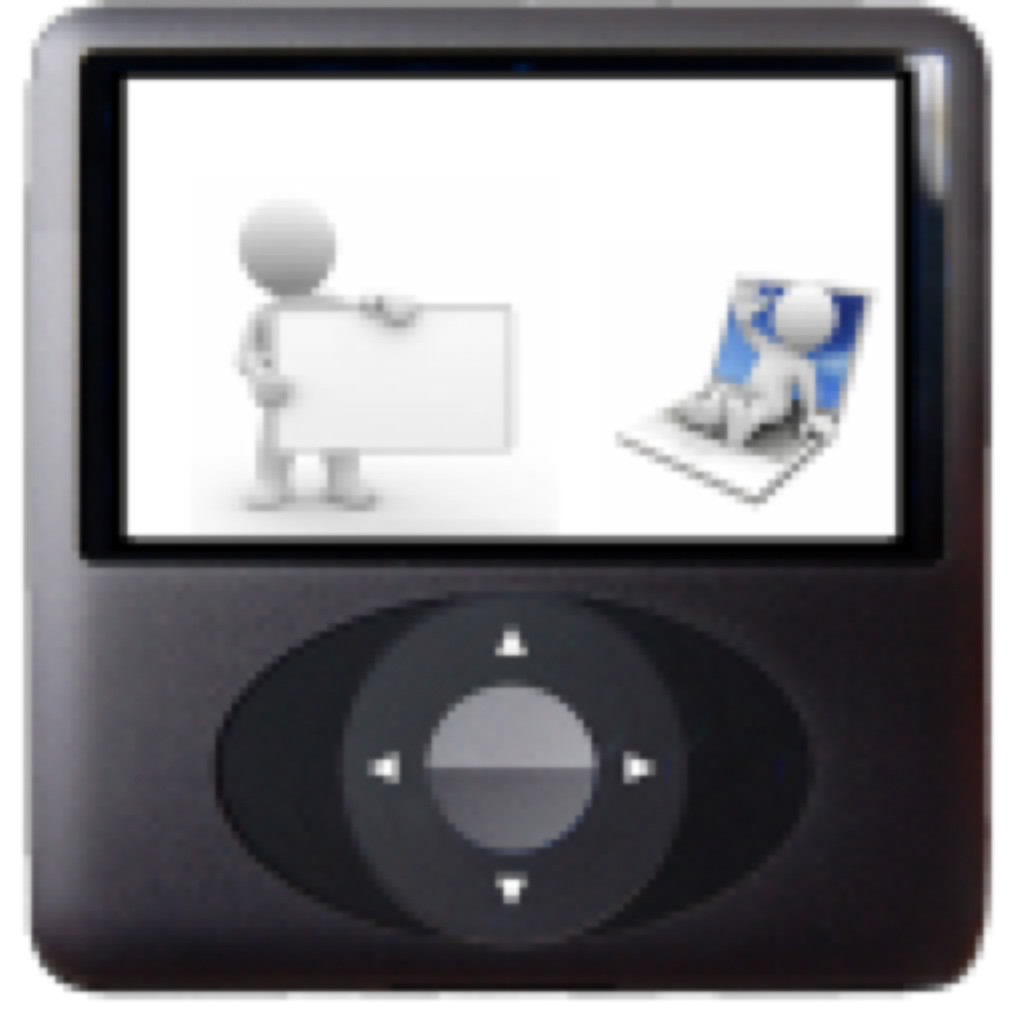
A couple of years back I looked at Parental Controls from SubRosa Soft and wrote a review that was on my old website, AMITIAE. For a number of reasons, that site was closed and I returned to work on eXtensions. This week, while updating information for students, I looked at the SubRosaSoft site and saw that my earlier review was stil shown as "a fair and thorough review of the product". The link, of course, is dead.
I am putting this copy of that same review online on eXtensions to make sure this is available (there may be archived copies). The content is unchanged, other than a quick spell check, a minor grammar fix, some formatting changes to suit this site and removal of two dead links. The price is unchanged at $39.95 and it remains at version 1.0.
Note that with changes to OS X, specifically with regard to sandboxing, the app may not open initially. Clicking on the app icon, while pressing the Control key will display a menu: Open, will give a warning, but the app can then be used.
The Problem of Children
There are some who believe that the internet has brought dangers to children and young people much closer. There are some who want limits need to be placed on users; that shells need to be fabricated to protect the young ones. I do not necessarily hold with all of that. I also worry about software that monitors use of a computer. It has to tread a fine line between spyware and monitoring.
The moment a child steps outside the home alone, there is potential for danger. When I was a kid in London, the warning then was never to accept sweets from a stranger and my mother was always concerned if she suspected any threat. At the same time (ever since I can remember) she had never opened any letter addressed to me. There was a balance between necessary protection and privacy.
A student of mine tells me that, when he was younger he was only allowed to use his computer in a family room, as recommended by some experts, but once past 15 or so, he was allowed internet access from the privacy of his own room. A while back I also knew a student whose father signed up for a graduate course at the same university and was in close attendance on campus every day. In the one case, parenting has taken a sensible approach to the child's maturity, in the other the parent is over-protective and may cause more damage.
Extreme Dangers
On Wednesday (writing as Cassandra) I passed some comments on the new movie Trust with Clive Owen and Katherine Keener as Dad and Mum of a teenage daughter who meets someone online.
The relationship that builds on the new MacBook Pro that is her birthday present is a total fabrication as she discovers to her horror at their first meeting. Alas, by then there are photos and videos (she has an iPhone too) and a lot that has been going on behind closed doors. It is an interesting -- sometimes traumatic -- lesson that will have to be learned by lots of teens and their families: balancing the need for privacy and the desire for protection. For a quick view of the trailer, use Apple's Front Row if you are a Mac user and hit movies, then trailers. There is enough there to see how disturbing this could be.
The review by Michael Kurcfeld on Huffington Post . . . has some succinct points and also carries a 9:26 interview and intro with Clive Owen, Liana Liberato (the daughter) and David Schwimmer the director who make some useful comments on what problems arise. Schwimmer hopes that parents see the movie with their teenage children.
SubRosaSoft are a company with much experience of security matters and they produce some of the strongest tools for forensic work on computers. They are only available for law enforcement and although I tried an early version a few years back, they won't let me near it now. They have produced an application that allows parents to monitor their children's computers, called ParentsRemote. That may be a perfect title: emphasising parents' remoteness. It costs $39.95 and may be downloaded from the SubRosaSoft. There is a trial version which works for 10 days and appears to have no restrictions.
This is OS X only software. Windows users may consider web-based software like CloudParent which is reported to be in beta [link removed - I cannot now find this].
Protection?
A look at some websites will reveal the way young people interact in sometimes healthy, sometimes dubious ways. Most here prefer online games or messaging (MSN) with people they already know. The movie, Trust was a warning to parents: an effort to encourage their involvement in their kids' lives. This is a controversial area. Some think their kids have no rights and are simply extensions of the parental will, while others are totally detached from their offspring. This program is not aimed towards the latter. It allows remote control of the computer, including access to power, messaging and the camera.
The application interface of ParentsRemote looks like an iPod. It even has a control similar to a click-wheel with Menu and OK buttons in the centre. There are Up, Down, Back and Forward arrows on the sides. Navigating through the menus is fairly instinctive therefore.
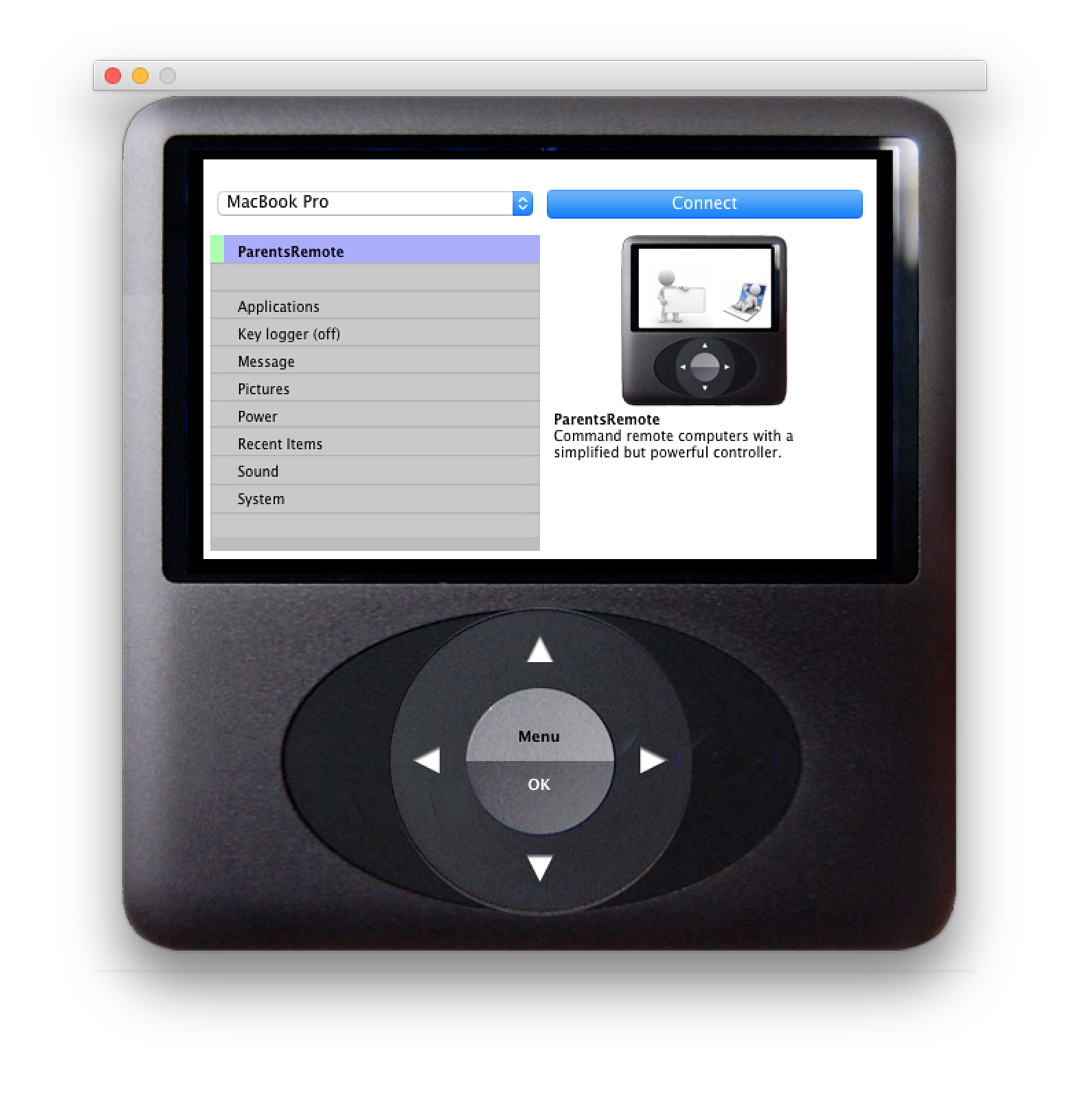
Setting up was easy enough, but it does pay to read the suggestions in the included PDF. The master program is installed on the parent's computer and the slave on the child's. For the test I just left it on the desktop, but in real conditions this would be installed in an Admin account away from the child. It was easy to make the link between the two computers once they were on the same network. With a home user this should not be a problem, but I have several to choose from in my office and had to confirm this first.
For the final steps to make the connection, as well as selecting a port (8088 is default) a security code must be entered. The space available would be enough for a complex password, but for the trial I entered 5555 (Thai users will get the joke). The final stage is to select the computer to be monitored (there could be several). When this is done a menu is revealed in the main window showing what can be watched: Applications, Key Logger, Message, Pictures, Power, Recent Items, Sound and System.
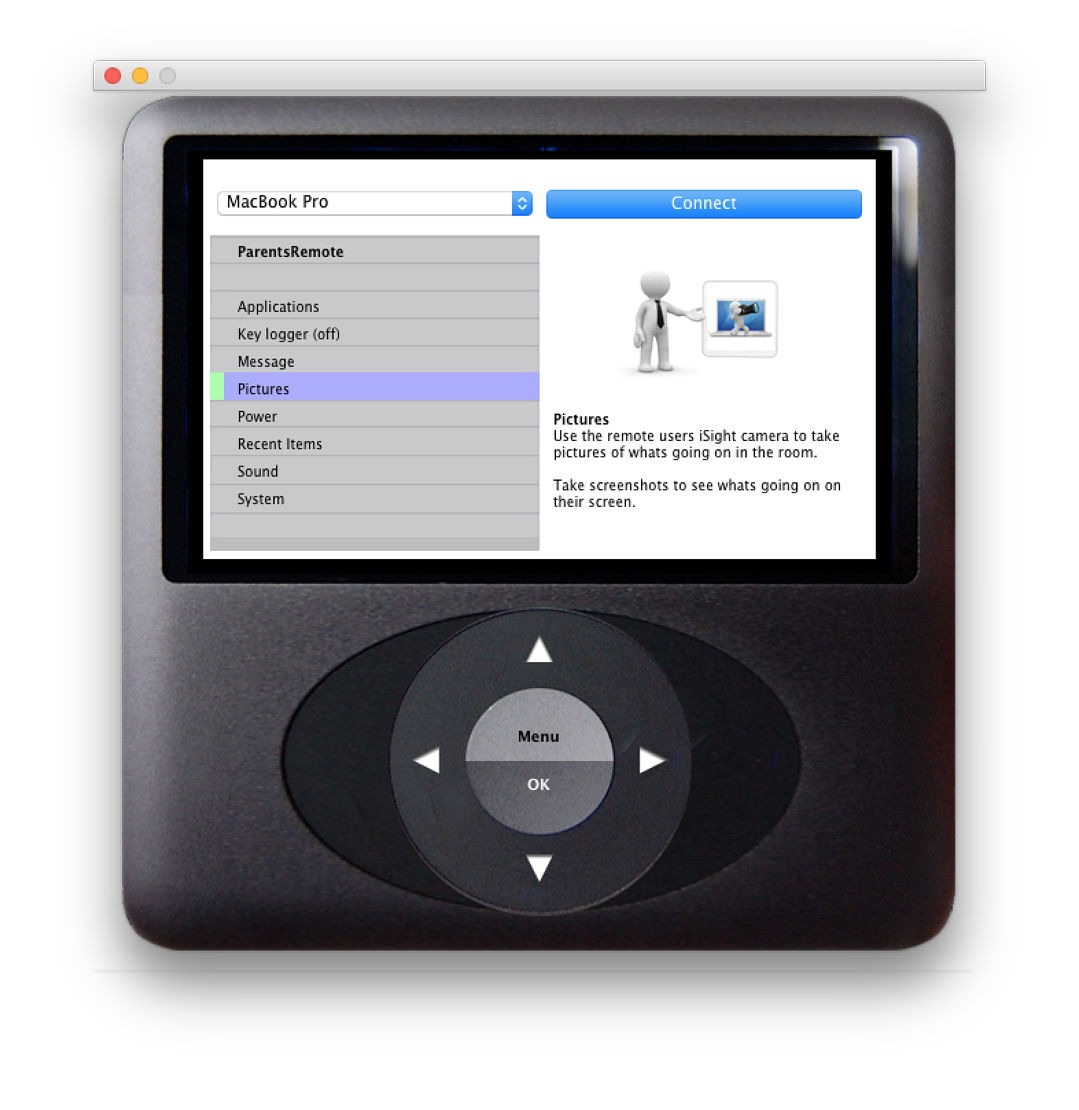
The menus
- Applications shows a list of anything running on the remote computer. What I was shown kept disappearing as the list refreshed itself every few seconds. By selecting one of these and pressing the OK button, I was offered the option to quit that program.
- The Keylogger records all keystrokes and before activating it, a warning was displayed concerning legal requirements. Not all of the key strokes were entered exactly as I made them and when the arrow keys were used, there was a slightly confusing display (Up][Right][Delete][Right][Right][Right][Right][Right][Right]) which might need some careful deciphering.
- A Message can be sent to the user of the remote computer. There is a brief list, plus a Custom entry. The three were Bed time, Come here please and Love You (see below for further comment).
- Pictures gives a user two ways to monitor the activities of the child: using iSight to monitor the room; and taking screenshots. Both can be timed (default is 120 seconds). Shots taken with the iSight camera were 800 x 600, while screenshots (on the larger screen of the iMac) were 1680 x 1050. These JPG images were saved into a folder on my monitoring computer in a folder I created when setting up this section.
- Power permits changes to be made to Sleep, Shutdown and Restart. A countdown of 30 seconds is default although it may also be done with a "Forced" setting. Apple's own Parental Controls allows control of the computer's use by a child with a series of time limits (on and off).
- Recent Items allows the parent to examine all recent activity on the child's computer and is in several sections: Applications, Documents, Downloads, Searches, Servers and Websites.
- Sound was interesting as this may be an area that parents disagree with their children on considerably. There are three controls: Up, Down and Mute. At the bottom is information concerning the percentage: mine was set to 100%.
- System reveals technical information: computer name, username, disk space available and IP address.
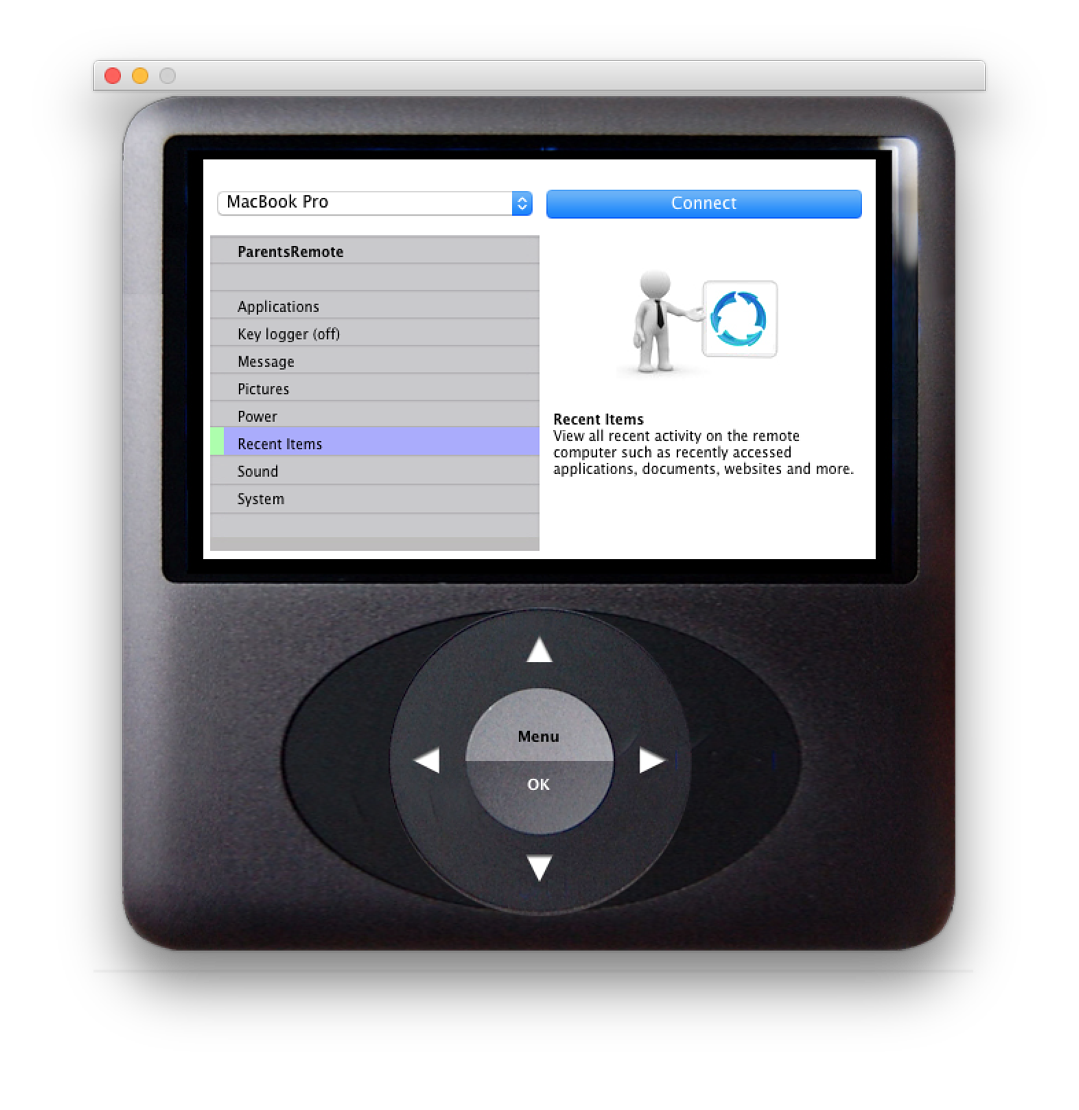
I am afraid I became a little unhappy reading the list of messages. Perhaps more than anything this displayed the very remoteness of such remote computing. To send a child the message, "Love You" is a degree of separation that only emphasises the lack of unity in a family. While an SMS message to the phone when the child is out playing is a connection, the remote message - computer to computer within the same house - highlights the separation. It does not even contain the pronoun, "I".
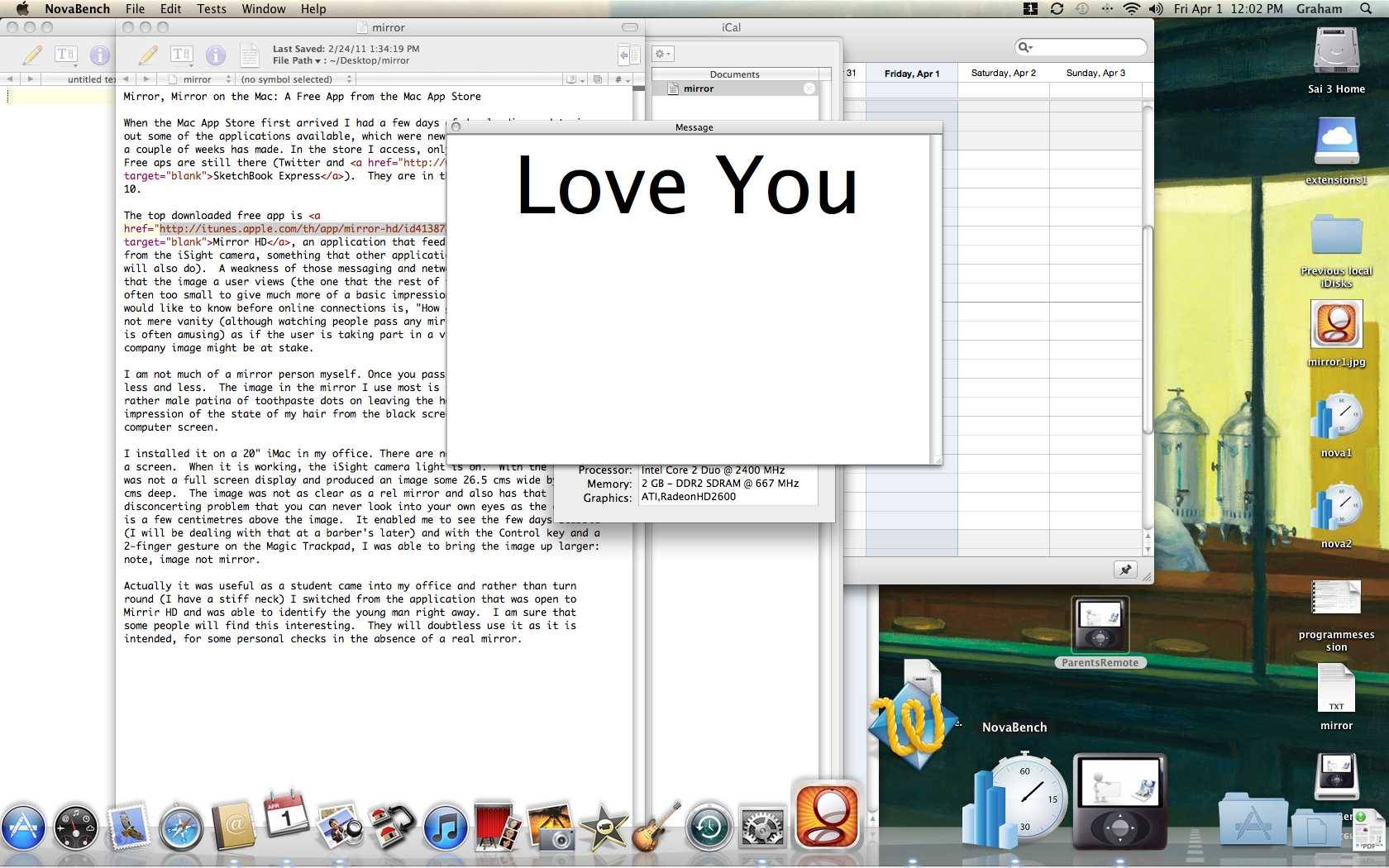
There certainly are uses for software like this, perhaps for its deterrent value; in a large house; or where a child has become particularly vulnerable (by their own behaviour or that of others). Technically, SubRosaSoft cannot be faulted for this application; nor can they be questioned ethically as there clearly is a need in some cases for some monitoring in some situations: that would be a decision made by parents. There is no doubt in my mind, however, that such software can never substitute for proper, engaged relationships between mothers, fathers and children. I would hope, therefore, that such a decision would be made by the family.
See also:
System Preferences in OS X 10.10, Yosemite: Parental Controls
Graham K. Rogers teaches at the Faculty of Engineering, Mahidol University in Thailand where he is also Assistant Dean. He wrote in the Bangkok Post, Database supplement on IT subjects. For the last seven years of Database he wrote a column on Apple and Macs. He is now continuing that in the Bangkok Post supplement, Life.
|

|






